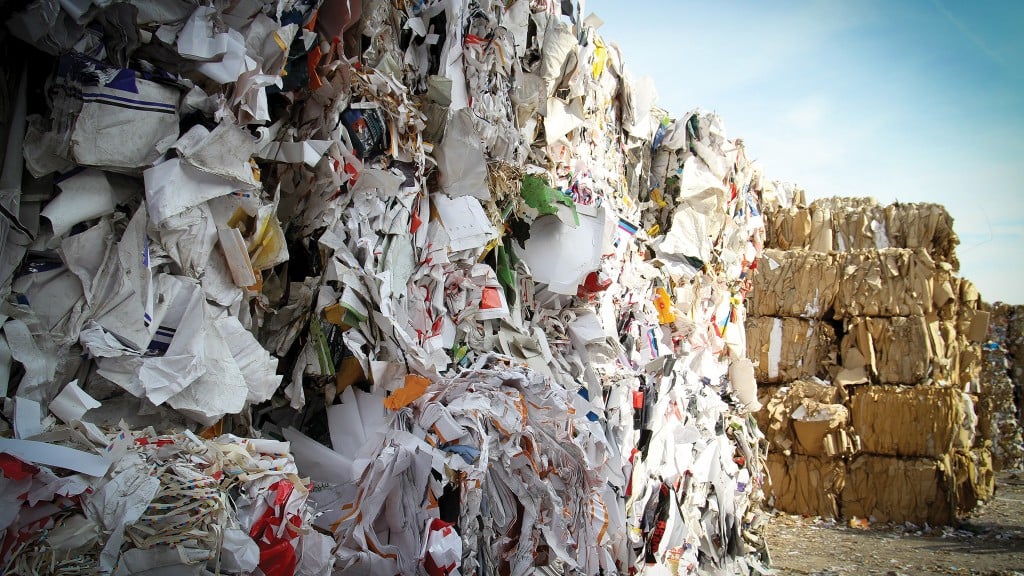4 paper recycling trends to watch this year
Check out the trends that are driving major change in how paper products are recovered and reused

This year has brought a lot of changes and challenges to the paper recycling industry. Some of the big topics include the composting-versus-recycling debate, tighter rules around PFAS, the growth of Extended Producer Responsibility (EPR) programs, and more attention on greenwashing. While both the U.S. and Canada are tackling these issues, they're taking different approaches. Here's a look at some of the key topics shaping paper recycling this year and what they could mean for the industry.
1. EPR expands in North America
EPR holds manufacturers, importers, retailers, and other producers accountable for the entire life cycle of any packaging they introduce into the market. EPR programs are expected to improve material recovery and reduce contamination, but their success also depends on effective collection systems and participation from consumers, including proper sorting and cleaning of recyclables at the source.
In Canada, almost every province is moving toward an EPR model by the end of 2025. A few regions — Prince Edward Island, Newfoundland and Labrador, Nunavut, and the Northwest Territories — haven't fully adopted EPR yet, but the rest are either rolling out new programs or refining the ones they already have. In the U.S., EPR progress varies by state. California, Oregon, and Maine already have programs in place, while others are in the process of developing legislation. Unlike Canada's nationwide push, the U.S. approach is more incremental.
2. Stricter regulations on environmental claims
Greenwashing happens when companies make misleading claims about their environmental practices or products to appear more eco-friendly than they really are. Companies can get away with this because there are often gaps in regulations or vague guidelines around what can be labelled as "eco-friendly" or "green." The growing demand for sustainable products has made many brands jump on the eco-friendly bandwagon, even if their actual practices don't align with their claims.
While regulations around this type of marketing are tightening, enforcement is inconsistent which makes it easier for companies to mislead consumers. There's a growing push for transparency in environmental claims as regulators ramp up efforts to crack down on inaccurate messaging.
At the end of 2024, the Competition Bureau of Canada released draft guidelines to clarify new anti-greenwashing rules added to the Competition Act. These guidelines state that environmental claims should be backed by evidence, comparisons need to be clear, and claims shouldn't be exaggerated.
In the U.S., the Federal Trade Commission is still reviewing potential updates to its Green Guides for the first time since 2012. With expectations for its release initially set for 2023 and then 2024, companies are still awaiting these updates.
3. Composting vs. recycling for fibre-based packaging
There's been debate about whether fibre-based packaging, like disposable containers and food-soiled paper, should be composted or recycled. Some businesses and policymakers are advocating for compostable fibre-based packaging as a more sustainable choice, but its impact on traditional recycling systems is still being explored.
Composting is often seen as an ideal way to handle materials with food waste, keeping them out of landfills. However, if compostable fibre-based packaging becomes too widespread, it could reduce the amount of fibre available for recycling. Since recycled fibre plays a key role in making new paper products, finding a balance between composting and recycling will be a challenge to look out for.
4. PFAS regulations
PFAS (per- and polyfluoroalkyl substances) are often called "forever chemicals" because they don't break down easily in the environment or the human body. They accumulate over time, leading to potential health problems and increased cancer risk. They're found in a variety of everyday products like fast food wrappers, microwave popcorn bags, and pizza boxes.
In Canada, the government is working to regulate and reduce PFAS under its Chemicals Management Plan and is considering adding PFAS to the list of toxic substances and phasing out their use in consumer products. Some PFAS, like PFOA and PFOS, are already restricted, with tighter controls being considered.
Early last year, the United States Food and Drug Administration announced that food packaging manufacturers had agreed to stop selling grease-proof packaging that contains PFAS as part of a voluntary phase-out. On top of this, several states have now put formal bans in place. It's still unclear whether national regulations are coming, but the industry is getting ready for stricter rules that could impact how materials are recovered and recycled.


